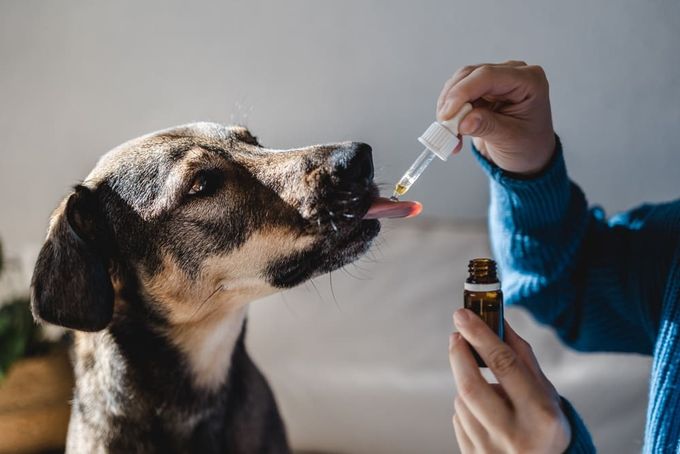Pet Insurance and Pre-existing Conditions: Expert Insights
Unmask the mystery of pre-existing conditions and give your furry friend the healthiest, happiest life possible
Published December 21, 2023.

More and more Americans are pet parents, with over 66% having furry friends at home. If your pup or kitty has conditions like hip dysplasia, knowing what falls under pre-existing and what doesn't is critical to keeping your wallet full and your dog or cat healthy.
Most plans won't cover pre-existing conditions right away, but some offer hope after a year symptom-free. Let's cut through the fluff and see how to navigate pet insurance like a pro.
🐾 Want to protect your pet? Check out insurance companies for pre-existing conditions
What Is a Pre-Existing Condition?
Pre-existing conditions are illnesses or injuries your pet had before the policy started or during the waiting period—the time between buying and using coverage. The insurance doesn't cover it.
For example, large breed dogs like Rottweilers and German Shepherds are genetically prone to elbow and hip dysplasia. Some insurance companies have requirements about these breeds, like having them registered with a policy by a particular age.
Note: Thinking of skipping the possible health issue box on your pet insurance application? Don't. Dishonesty about your furry friend's well-being can backfire, resulting in a denial of claims or even policy cancellation.
Examples of Pre-existing Conditions
Every insurance company has its list of pre-existing conditions they won't cover. So, grab your policy and read the fine print – what's covered and not. Here are some common examples:
- Allergies
- Arthritis
- Bladder issues
- Cancer
- Canine or feline diabetes
- Dental disease
- Ear infections
- Heart disease
- Hip/elbow dysplasia
- Rabies
- Respiratory and urinary tract infections
- Vomiting
- Worms Source: ASPCA
🐾 Looking to buy a dog? Discover breeds with the most health issues
Curable vs. Incurable Pre-existing Conditions
Pet insurance companies divide pre-existing conditions into two main categories. First up are curable. They're anything your dog or cat was treated for and will likely recover from fully. Some of them even state that it'll no longer be considered pre-existing if it's cured and free of symptoms and treatments for 180 days.
On the other hand, you have incurable conditions. Here, there's no reasonable expectation of full recovery. Illnesses in this category have to be managed. That's why most companies will only cover them after you buy the insurance policy.
Hereditary and Congenital Conditions
Hereditary conditions are more common in purebred dogs and cats. For example, bulldogs are prone to intervertebral disc disease (IVDD).
Congenital conditions are problems present at birth regardless of whether or not your pet shows signs. Some examples include certain liver diseases, nervous system issues, and heart disease.
Hereditary and Congenital Condition Coverage
Some insurance companies cover hereditary and congenital conditions, provided your pet hasn't shown signs or been diagnosed with any condition when you purchase your policy.
Got a purebred pup? Some insurance companies make you buy a separate policy for their breed-specific health concern. Skip it, and they won't cover those issues later. Plus, you might have to wait longer for coverage to start in certain conditions.
What are bilateral conditions?
A bilateral condition influences both sides of your pet. Many insurance policies say that they won't cover the same injury on the other side.
🐾 Learn to prevent ear infections in your dog
Does Any Pet Insurance Cover Pre-Existing Conditions?
Insurance companies must manage risk just like you shield your finances. High-risk pets drive up premiums for everyone, making insurance less appealing for owners of healthy pets. Companies try to mix healthy and sick ones in their pool to keep the system fair.
How To Choose Pet Insurance for Pre-Existing Conditions
Before buying pet insurance, compare policies. Read terms, waiting periods, and exclusions carefully. Another crucial tip: buy young. Prices rise with age, so act while your furry friend is still happy and healthy.
Compare these key aspects:
- Deductibles
- Reimbursement rates
- Annual coverage
- Monthly premiums
Note: Pet insurance can be worth it for pre-existing conditions, depending on the specific circumstances. Certain policies may offer limited coverage. You can consult a veterinarian to figure out the best action for your furry friend's needs.
From Past to Present Paws
Having pet insurance protects your furry friend's well-being in the long run. They can encounter age-related health issues as they get older, too. While a condition like hip dysplasia might not be covered, the coverage saves money on diagnosing and treating diseases like cancer after several years.
Prioritize their health by maintaining a nutritious diet, regular exercise, vet check-ups, and parasite prevention. Explore Daily Tails to connect with fellow pet owners, compare insurance providers, and discover valuable insights about pet care and breeds.


